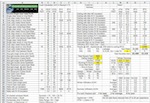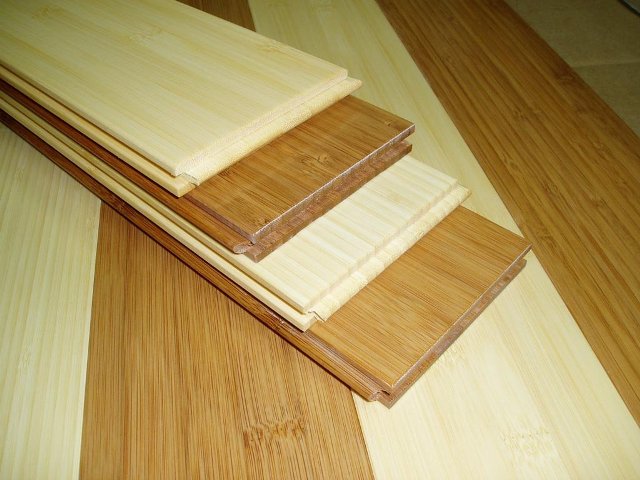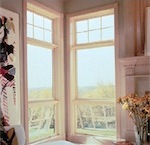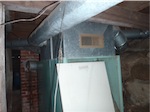Exhaust Ventilation
In homes where depressurization does not pose a safety, health, or structural durability risk, exhaust ventilation can be very effective (Figure 2). Its success depends on the ability of the exhaust ventilation fan to pull air from all parts of the house, a job made difficult by closed interior doors, air leakage sites, and stack effect, which increases with building height and severity of climate. Therefore, exhaust ventilation is most effective in small, very tight homes with open floor plans.
Single-port versus multi-port. Exhaust systems vary according to the location of the fan and the number of exhaust points, or ports. Locating the exhaust ventilation fan in a bathroom saves the cost of one spot fan but makes it harder for the fan to pull air from all the other rooms, especially when the bathroom door is closed. Locating the exhaust fan in a central hall or stairway improves its ability to pull air from all rooms (Figure 3). The multi-port is the most effective exhaust system. It uses a remote fan, located in a garage or attic, connected by small (4- to 6-inch-diameter) ventilation ducts to several rooms, usually each bathroom (Figure 4).
With exhaust ventilation systems, it is not possible to filter incoming air or to control the source of that air, so negative indoor pressure is as likely to pull air from a moldy crawlspace or dusty attic as from outdoors. Exhaust systems sometimes include several passive vents, which are small (4- to 6-square-inch) screened openings installed in exterior walls or windows. These vents are designed to provide some control over the location of incoming air but require 10 to 20 Pascals of negative indoor pressure to be effective. In other words, the exhaust fan must significantly depressurize the building to ensure that air enters the home through the vents. Otherwise, they are uncontrolled leakage sites, and stack effect determines the direction of air flow (as it does when there is no ventilating fan).
Supply Ventilation
With supply ventilation, the fan not only draws incoming air from one uncontaminated location, but it can also filter the incoming air, which is important to the growing number of people with asthma, allergies, and chemical sensitivities (Figure 5). Supply systems always include spot exhaust fans in the bathrooms and kitchen for removing excess moisture and odors.
Forced-air supply systems use the fan and ductwork of the forced-air heating or cooling system to distribute ventilation air. Typically, a 6- to 12- inch-diameter supply air duct runs from outdoors to one of the plenums of the forced-air handler. When the forced-air fan runs, outdoor air is drawn into the plenum, mixed with recirculated indoor air, and delivered to the house. But while the need for heating or cooling is intermittent, ventilation is needed all the time, so a control (which costs about $100 installed) must be used to operate the forced-air fan at regular intervals (usually about 20 minutes each hour) for ventilation whenever the fan is not operating for heating or cooling.
Because a standard forced-air fan cannot be operated continuously, it doesn’t maintain positive indoor pressure. And since forced-air systems are designed to move ten times as much air as is needed for ventilation (about 1,200 versus 120 cfm), these systems are noisier and more expensive to operate than those designed for ventilation only. Besides the noise, residents may also object to untempered air coming out of the supply registers. These disadvantages can be mitigated by installing an efficient, variable-speed (ECM) forced-air fan that can operate continuously. Such a fan increases forced-air supply installation costs by about $1,000.
As an alternative to using the hvac supply system, an independent, multi-port supply ventilation fan can distribute outdoor air to living room and bedrooms through a set of 4- to 6-inch-diameter ventilation ducts. This provides all the benefits of supply ventilation, including quietness, efficiency, air filtration, and positive indoor air pressure, without the drawbacks of using forced-air fans and ducts. Surprisingly, multi-port supply is the least common type of ventilation system currently used, partly because builders and homeowners are more familiar with exhaust fans and forced-air systems.
Balanced Ventilation
Balanced ventilation systems use two fans that exhaust and supply similar volumes of air, so indoor pressure is not affected (Figure 6). The primary advantage of balanced ventilation, however, is not neutral pressure but the ability to transfer energy from exhaust air to temper incoming supply air. Thus, balanced systems vary according to whether they incorporate heat recovery and how well they do it.
Balanced systems are more expensive than unbalanced systems, because the installation and operation of two fans is required. Balanced ventilation can be used in any climate but is most common in very cold or hot, humid climates, where heat recovery is most cost-effective.
In winter, heat-recovery ventilation systems (HRVs) use heat from the exhaust air to raise the temperature of incoming supply air (Figure 7). Energyrecovery ventilation systems (ERVs) are similar, except they exchange moisture as well as sensible heat energy. ERVs transfer moisture from the more humid to the less humid airstream. In arid climates, moisture is transferred from outgoing to incoming air; in humid climates, moisture is transferred from incoming to outgoing air, until the ERV’s capacity for moisture transfer is reached. ERV moisture transfer is passive, and neither the amount nor the direction of transfer can be controlled.
HRVs and ERVs vary according to the type and efficiency of the heat recovery mechanism and the efficiency of the ventilation fans. When selecting a unit, refer to the Home Ventilation Institute’s annual “Certified Home Ventilating Products Directory” (available by calling 847/394-0150, or through their website, www.hvi.org), which reports HRV and ERV efficiencies. HRVs and ERVs provide excellent distribution of air because both fans are usually ducted to several rooms. The main disadvantages of HRVs and ERVs are their high initial cost and the fact that considerable expertise is required to properly install and maintain them.







